Scientific Peer Review
2006 Naphthalene State-of-the-Science Symposium
Regulatory Checkbook designed, organized and implemented a true scientific peer review for naphthalene (CASRN 91-20-3), a white solid or liquid that occurs naturally in fossil fuels and is more widely known as the primary ingredient in mothballs. In 2000, the National Toxicology Program concluded a 2-year bioassay in rats, which has been suggested as evidence that naphthalene could cause cancer in humans at environmental or occupational levels of exposure.
The Symposium addressed four major scientific questions. It was easily distinguished from the conventional government peer review because all policy issues were scrupulously excluded. provides an innovative model for the effective use of peer review to identify scientific uncertainties and propose research strategies for reducing or eliminating them prior to the conduct of risk assessment.
For more information about the Symposium, see the archived web site.
The Symposium addressed four major scientific questions. It was easily distinguished from the conventional government peer review because all policy issues were scrupulously excluded. provides an innovative model for the effective use of peer review to identify scientific uncertainties and propose research strategies for reducing or eliminating them prior to the conduct of risk assessment.
For more information about the Symposium, see the archived web site.
The naphthalene state of the science symposium: Objectives, organization, structure, and charge
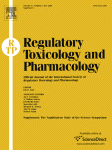
This report provides a summary of the objectives, organization, structure and charge for the naphthalene state of the science symposium (NS3), Monterey, CA, October 9–12, 2006. A 1-day preliminary conference was held followed by a 3-day state of the science symposium covering four topics judged by the Planning Committee to be crucial for developing valid and reliable scientific estimates of low-dose human cancer risk from naphthalene. The Planning Committee reviewed the relevant scientific literature to identify singularly knowledgeable researchers and a pool of scientists qualified to serve as expert panelists. In two cases, independent scientists were commissioned to develop comprehensive reviews of the relevant science in a specific area for which no leading researcher could be identified. Researchers and expert panelists alike were screened for conflicts of interest. All policy issues related to risk assessment practices and risk management were scrupulously excluded. NS3 was novel in several ways and provides an innovative model for the effective use of peer review to identify scientific uncertainties and propose research strategies for reducing or eliminating them prior to the conduct of risk assessment.
A review of whole animal bioassays of the carcinogenic potential of naphthalene
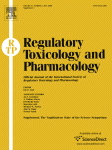
This report provides a summary of deliberations conducted under the charge for members of Module A participating in the Naphthalene State-of-the-Science Symposium (NS3), Monterey, CA, October 9–12, 2006. Whole animal bioassays have been performed by the National Toxicology Program in mice and rats to ascertain the carcinogenic potential of naphthalene by inhalation exposure. A statistically significant increased incidence of pulmonary alveolar/bronchiolar adenoma (a benign lesion), was observed among female mice; an observed increase among the males did not reach statistical significance. No nasal tumors were observed in either sex. A tumorigenic response was observed in both sexes of rats, in males an increased incidence of nasal respiratory epithelium adenoma (a benign rather than malignant lesion) and in females, olfactory epithelial neuroblastoma. Interpretations of these studies vary. On the one hand, evidence of extensive non-neoplastic response in both sexes of both species indicates cytotoxicity occurred at all doses, and strongly suggests that cytotoxicity played a significant role in the tumor responses observed in the target tissues. On the other hand, olfactory epithelial neuroblastoma has rarely been observed in NTP bioassays. This review seeks to develop a consensus understanding of the scientific evidence provided by these studies, taking into account that they have been used as the basis for quantitative human cancer risk assessment, and suggests scientific studies that, if performed, could resolve scientific uncertainties.
Available data on naphthalene exposures:
Strengths and limitations
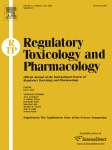
Exposures to naphthalene occur from a number of sources. Data on these exposures have been reported by a number of researchers; however, these data have not been organized into a consistent framework. In addition, while naphthalene has been identified as an animal inhalation carcinogen there has been no attempt to define the ranges of long-term average inhalation exposures for the general population or sub populations that are relevant to the assessment of the risk of the occurrence of chronic effects. This paper attempts to organize the available data on naphthalene levels in air and provide ranges for the long-term average concentrations experienced by different populations. The paper also discusses the limitations of available data and identifies areas for future research.
Exposure, epidemiology and human cancer incidence of naphthalene
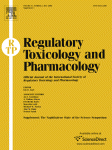
This report provides a summary of deliberations conducted under the charge for members of Module B participating in the Naphthalene State-of-the-Science Symposium (NS3), Monterey, CA, October 9–12, 2006. The panel’s charge was to derive consensus estimates of human exposure to naphthalene under various conditions, cancer incidence plausibly associated with these exposures, and identify quintessential research that could significantly reduce or eliminate material uncertainties to inform human cancer risk assessment. Relying in large part on a commissioned paper [Price, P.S., Jayjock, M.A., 2008. Available data on naphthalene exposures: strengths and limitations, in this issue], exposure levels were estimated for background (0.0001–0.003 μg/m3), ambient air (0.001–1.0 μg/m3), vehicles (0.003–3.0 μg/m3), residences (0.1–10 μg/m3), mothball use (on-label: 1–100 μg/m3; off-label: 10–100 μg/m3), and occupational (low: 3–100 μg/m3; high: 30–1,000 μg/m3). There have been few published reports of human cancer associated with naphthalene exposure. Several research projects are suggested that could reduce uncertainty in our understanding of human exposure. Using best scientific judgment, it is reasonably certain that the largest non-occupational exposures to naphthalene are indoor/residential exposures, particularly in households that use naphthalene-based products such as mothballs. However, even the highest of these exposures is likely to fall one or more orders of magnitude below moderate or high-level occupational exposure levels experienced by the few known cohorts exposed occupationally to naphthalene alone or as part of chemical mixtures such as jet fuel.
Naphthalene metabolism in relation to target tissue anatomy, physiology, cytotoxicity and tumorigenic mechanism of action
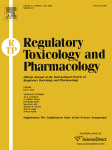
This report provides a summary of deliberations conducted under the charge for members of Module C Panel participating in the Naphthalene State-of-the-Science Symposium (NS3), Monterey, CA, October 9–12, 2006. The panel was charged with reviewing the current state of knowledge and uncertainty about naphthalene metabolism in relation to anatomy, physiology and cytotoxicity in tissues observed to have elevated tumor incidence in these rodent bioassays. Major conclusions reached concerning scientific claims of high confidence were that: (1) rat nasal tumor occurrence was greatly enhanced, if not enabled, by adjacent, histologically related focal cellular proliferation; (2) elevated incidence of mouse lung tumors occurred at a concentration (30 ppm) cytotoxic to the same lung region at which tumors occurred, but not at a lower and less cytotoxic concentration (tumorigenesis NOAEL = 10 ppm); (3) naphthalene cytotoxicity requires metabolic activation (unmetabolized naphthalene is not a proximate cause of observed toxicity or tumors); (4) there are clear regional and species differences in naphthalene bioactivation; and (5) target tissue anatomy and physiology is sufficiently well understood for rodents, non-human primates and humans to parameterize species-specific physiologically based pharmacokinetic (PBPK) models for nasal and lung effects. Critical areas of uncertainty requiring resolution to enable improved human cancer risk assessment were considered to be that: (1) cytotoxic naphthalene metabolites, their modes of cytotoxic action, and detailed low-dose dose–response need to be clarified, including in primate and human tissues, and neonatal tissues; (2) mouse, rat, and monkey inhalation studies are needed to better define in vivo naphthalene uptake and metabolism in the upper respiratory tract; (3) in vivo validation studies are needed for a PBPK model for monkeys exposed to naphthalene by inhalation, coupled to cytotoxicity studies referred to above; and (4) in vivo studies are needed to validate a human PBPK model for naphthalene. To address these uncertainties, the Panel proposed specific research studies that should be feasible to complete relatively promptly. Concerning residual uncertainty far less easy to resolve, the Panel concluded that environmental, non-cytotoxic exposure levels of naphthalene do not induce tumors at rates that can be predicted meaningfully by simple linear extrapolation from those observed in rodents chronically exposed to far greater, cytotoxic naphthalene concentrations.
Critical assessment of the genetic toxicity of naphthalene
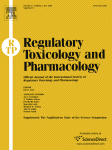
Studies demonstrating that naphthalene produces respiratory tract tumors in mice and rats raised the question of whether humans are at risk for cancer, at environmental or workplace concentrations of naphthalene. Arguments in favor of a threshold-dependent mode of action for tumor induction have been based on the facts that naphthalene does not appear to bind to DNA in vivo and that the rodent tumors occurred at high dose levels associated with substantial target site toxicity. A summary of more than 45 publications describing results for naphthalene in genetic toxicology test methods shows that 80% of the studies reported found no evidence of genotoxicity for naphthalene and that some of the studies which reported positive finding were technically unsuited to study this class of chemicals and, therefore, generated unreliable data. The remaining positive findings for naphthalene were all consistent with secondary DNA effects produced by toxicity from naphthalene alone or one of its metabolites. Based on the data reviewed in this report, it is not apparent that genetic lesions produced by naphthalene or any of its metabolites drive the tumorigenic activity.
Possible genotoxic modes of action for naphthalene
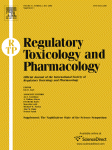
This report provides a summary of deliberations conducted under the charge for members of Module D participating in the Naphthalene State-of-the-Science Symposium (NS3), Monterey, CA, October 9–12, 2006. The charge directed the panel to ascertain to the best of its ability a consensus judgment of the state-of-the-science concerning the potential for a genotoxic mode of action for naphthalene and its metabolites, with implications for low-dose extrapolations of cancer risk estimates for exposed populations. Where scientific uncertainties remained, the panel was asked to identify which scientific uncertainties (if any) could be resolved through targeted, timely, cost-effective research. The report provides a brief summary of naphthalene genotoxicity; identifies those areas where there is a general scientific consensus regarding the effects of naphthalene; identifies areas of uncertainty regarding the effects of naphthalene; and key questions that currently limit our ability to assess the genotoxic risks of naphthalene. The report also outlines a set of six studies that could resolve some of these key uncertainties.
|
If you like what you see, please support our work by making a tax-deductible donation. The easiest way to do that is via PayPal.
|
|

